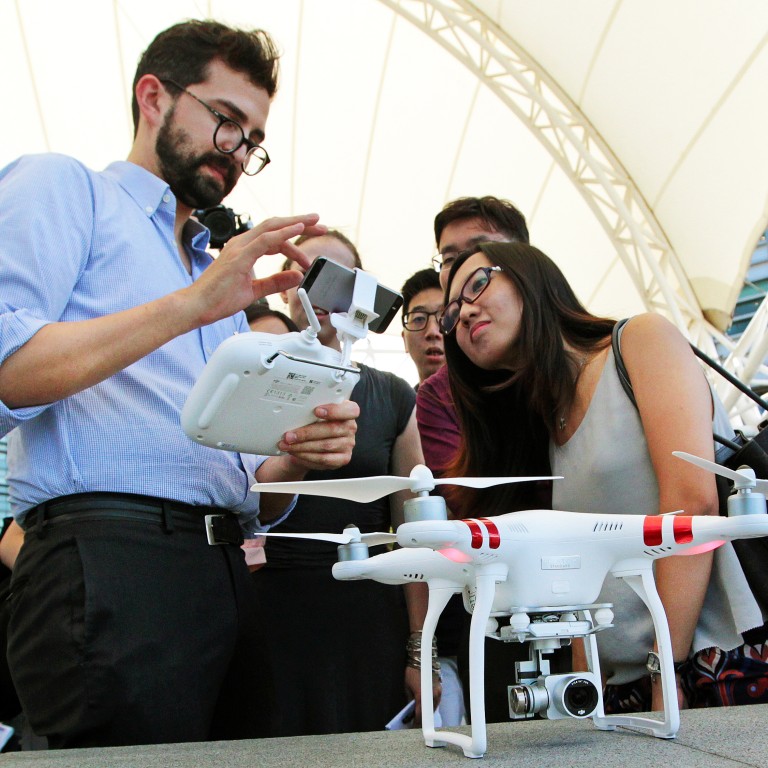
Hong Kong lures world's top drone maker DJI back from Shenzhen with vast talent pool, changing business climate
For Hong Kong, DJI still ranks as the one that got away.
The idea for the US$10 billion start-up was first conceived in the city but the company, which now ranks as the world’s largest drone maker, is based on the other side of the Chinese border in the former boomtown of Shenzhen.
Luckily for Hong Kong, DJI is making at least a partial return to its roots in a bid to find talented staff to boost its research and development efforts, and the local authorities aim not to blow it this time.
DJI founder Frank Wang Tao, a mainland Chinese graduate of Hong Kong University of Science and Technology, opted to build the company in Shenzhen, in the southern province of Guangdong, after becoming frustrated by the lack of government support and funding in Hong Kong when he graduated in 2006.

“I wouldn’t say that we ever really left, because Hong Kong has a number of advantages,” said Michael Perry, director of communications for DJI.
“It’s got a huge talent base. It’s got a world-class logistics hub […and] now at the science park, we’re also going to expand with some of the talent base that HKUST has."

READ MORE: China restricts exports of 'high performance' drones as national security fears heighten
As the city seeks to build up its innovation and technology sectors, DJI’s decision to elope and its subsequent success has been held up as a shining example of the government’s failure to nurture and keep hold of innovators.
Chief Executive Leung Chun-ying’s attempt to secure funding for a controversial innovation and technology bureau further stoked criticism of the government’s commitment to this field.
Andrew Young, chief commercial officer of HKSTP, said the likelihood of another technology start-up jumping ship had receded as local interest in start-ups is picking up.
“Over the past 18 months, we’ve seen a huge increase in interest in start-ups,” Young said.
“DJI is like a fairytale and I think the ecosystem between Shenzhen and Hong Kong has facilitated growth.”
READ MORE: Hong Kong seeks innovation but chokes firms that can power development
HKSTP is helping the company find engineers but has not provided any financial incentives to bring DJI back to Hong Kong, he said.
Five of the city’s six engineering schools currently rank inside the global top 100, giving Hong Kong the highest concentration of potential expertise among any Chinese city, he added.
“DJI felt that given their success, the ability to attract talent was the next building block, and Hong Kong was the key,” Young said.
After initially focusing on the United States and European markets, Perry said the firm is seeing more interest from hobbyists in China who are looking for new ways to shoot pictures or videos.

